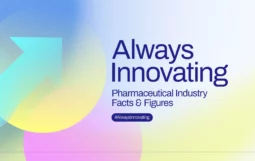Medical miracles call for “moonshot” mindsets
Over the course of my lifetime, human lifespan extended by three decades. Today we hope to lead healthy lives well into our 80s.
Now I have to declare a vested interest in this topic: I am an aspiring role model for active and healthy ageing (I’m past 60 and look forward to working actively for a number of years to come). And I have also been involved in arguing the case of vaccines and medicines innovation for most of my active life. I have seen my fair share of “moonshots” succeed and fail.
Development of new vaccines and medicines is not getting any easier, indeed nearly 9 out of 10 pharma projects fail. But the reason why this scientific progress has been possible is because pharmaceutical companies have been able to make huge investments over many years, in the knowledge that if they succeed, the risks will be rewarded. And, as fitting to highlight on World IP Day, this would not be possible without the certainty that securing intellectual property provides.
Intellectual property is the foundation upon which innovation depends. It provides the basis for policy makers to devise incentives, it fosters an environment of competition and it makes collaboration possible.
I recall, when the World Health Organization set the goal in 2002 of treating 3 million people in poor developing countries who had contracted HIV with antivirals by 2005; most of the experts thought it was aspirational, i.e. unlikely to happen. This was a moonshot at its best – shooting for the stars.
While HIV/AIDS still claims too many lives and causes suffering to millions of affected people and their loved ones across the world, progress in treating HIV/AIDS has been dramatic: 30 million new HIV/AIDS infections and nearly 8 million AIDS-related deaths were averted since 2000. Increasing access to HIV/AIDS treatment has come about due the action of many different stakeholders. NGOs have encouraged policymakers to prioritise action, international organisations have provided funding, expertise and facilitated collaboration between companies, national policymakers have recognised the problem and prioritised the building of healthcare infrastructure, and the innovative and generic industry have played a vital role in developing and helping to provide access to medicines. Today, not 3 but more than 11 million HIV/AIDS patients in developing countries are treated with antiviral medicines. The initial fast-tracking of innovations was possible not least thanks to major pharmaceutical companies undertaking a collaborative effort, agreeing to work together at an early development stage to exchange molecules and to carry out early testing of how they are reacting in combinations.
There have since been moonshots for cancer and other diseases and we’ve seen major innovations not only in the area of oncology treatment but also in diseases such as RA (rheumatoid arthritis) and Hepatitis C. Twenty years ago, if you were diagnosed with an ultra-rare disease, it was just bad luck. Nowadays, carefully designed intellectual property policies encourage biopharmaceutical companies, big and small, to undertake risky research, but with the possibility to dramatically improve the lives of people with rare diseases and get a return on their investment.
Increasingly, we also look to collaborative approaches to research as well as new models for incentives. For example, there are multiple initiatives bringing academia and the private sector together to speed up discovery research and development of new solutions to health challenges, be it in pooling resources for identifying genetic markers or in collaborative efforts on fighting antimicrobial resistance. I strongly believe in the competition driven business model; there is nothing more effective to come up with something new. But in areas like neglected tropical diseases and anti-microbial resistance, we must be open to new models which may be better suited to meet public health needs and help different stakeholders develop new expertise, such as sharing big data.
Each day, the innovation model is put to the test. Today, we face our greatest “moonshot” challenge: finding a solution to Alzheimer’s. Many scientists, doctors, pharma executives have dedicated their lives to finding a solution to this disease. As World IP Day is celebrated, and how innovation turns health problems into progress, its only correct that we acknowledge that without IP and recognising the rights of inventors, we don’t stand a chance of making the long awaited breakthrough to unlock this devastating diseases and many others, reducing the toll it takes on people, their careers and society as a whole.
Author






